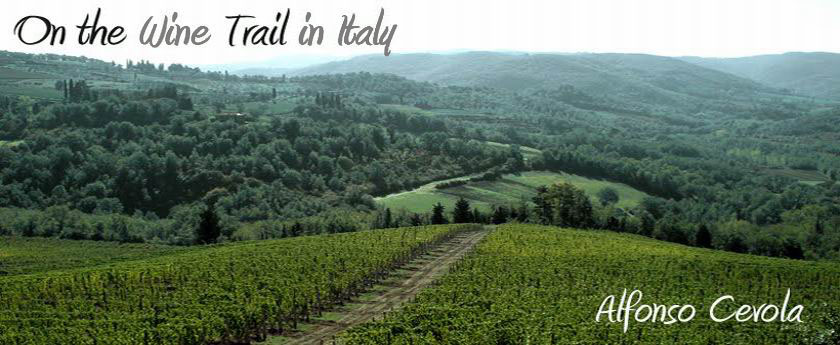 On July 18, 1942, 73 young Jewish children started their journey to safety. They would end up in Nonantola, a small town near Modena. Their new home would be Villa Emma, and thanks to the courage of many, they escaped the horror of the concentration camps.
On July 18, 1942, 73 young Jewish children started their journey to safety. They would end up in Nonantola, a small town near Modena. Their new home would be Villa Emma, and thanks to the courage of many, they escaped the horror of the concentration camps.There are many stories like this told in the Italian countryside, especially in the south. But in the richer, industrial north, closer to the seat of power and in the path of the German army, to shelter 73 young Jewish kids was an act of courage that put so many lives at risk.
 Walking through the villa, now part shrine and part working balsameria (a place where balsamic vinegar is made) there are all manner of emotions that jump out, even to the casual tourist. This day we were visiting the Giacobazzi family and their balsamic vinegar operations. They now own Villa Emma.
Walking through the villa, now part shrine and part working balsameria (a place where balsamic vinegar is made) there are all manner of emotions that jump out, even to the casual tourist. This day we were visiting the Giacobazzi family and their balsamic vinegar operations. They now own Villa Emma.We had been to an olive oil factory, to a Prosciutto plant and to a dairy where they made Parmigiano. We had been to a winery, and as we were driving towards the Villa Emma I saw the name Giacobazzi and thought of the 1970’s when so much of their Lambrusco invaded the American shelves. That era of the business is over now, but the vinegar business is stronger than ever. In fact, in America it is often hard to find vinegar that doesn’t have the name balsamic on it. A sad note that most vinegar labeled balsamic is a ghostly shadow of the real thing.
We stopped at the Fattorie Giacobazzi near Modena and tasted their products at a nearby restaurant with food. I normally do not like the sweeter style of vinegar, but we were in a center of traditional production and it made all the difference in the world. The wines and foods and vinegars paired beautifully on that day, from appetizer to dessert. But that doesn't seem too important right now.
 This post isn’t about wine or food or even vinegar. No, it’s about the Italian spirit that created a space for young lives to continue. The same space that fosters grapes into vinegar, become something greater than the wine it might have been destined to become. Lambrusco and Trebbiano grapes, along with a few other native grapes, Sorbara, Salamino, Ancellotta. Their lives transformed.
This post isn’t about wine or food or even vinegar. No, it’s about the Italian spirit that created a space for young lives to continue. The same space that fosters grapes into vinegar, become something greater than the wine it might have been destined to become. Lambrusco and Trebbiano grapes, along with a few other native grapes, Sorbara, Salamino, Ancellotta. Their lives transformed. The upper floor is quiet, serene, like a chapel, filled with ancient kegs of vinegar, from a family that has been keeping it up for more than 200 years. It was like walking through a living mausoleum of family history. The hands of the grandparents and great grandparents, still in evidence in the rooms. The closest thing to life beyond our sentence of 50-70-90 years. Immortality? No. But something greater than just a few moments in the spotlight. And with something to show, to share, for those who come after.
The upper floor is quiet, serene, like a chapel, filled with ancient kegs of vinegar, from a family that has been keeping it up for more than 200 years. It was like walking through a living mausoleum of family history. The hands of the grandparents and great grandparents, still in evidence in the rooms. The closest thing to life beyond our sentence of 50-70-90 years. Immortality? No. But something greater than just a few moments in the spotlight. And with something to show, to share, for those who come after. The Jewish survivors, who are no longer young, come back to Villa Emma. They bring their children and their grandchildren, to show them a place, and a time, that honored their beliefs and their lives. And this place lives on to honor the traditions of the elders who toiled in those rooms at the top of the villa. The same villa that sheltered 73 young, scared, homeless, children who had lost most of their family in a war and a sin against humanity. Now they come back to celebrate the victory of good over evil. And toast the victory with the sweet balsamic of the ages from the villa.
The Jewish survivors, who are no longer young, come back to Villa Emma. They bring their children and their grandchildren, to show them a place, and a time, that honored their beliefs and their lives. And this place lives on to honor the traditions of the elders who toiled in those rooms at the top of the villa. The same villa that sheltered 73 young, scared, homeless, children who had lost most of their family in a war and a sin against humanity. Now they come back to celebrate the victory of good over evil. And toast the victory with the sweet balsamic of the ages from the villa.
http://www.fondazionevillaemma.org/
http://www.youtube.com/watch?v=K0Si1xMNOok
http://www.jvibe.com/israel/great_escape.php
http://www.catholiceducation.org/articles/catholic_stories/cs0070.html

Note: this post was written as a result of being on an invited tour of Emilia and Tuscany by the Italian Trade Commission

